Keywords:
Pedestrian; Road crossings; Road transport authority; Bangladesh
Introduction
The main objectives and goals of our case study on selected topic were-
To demonstrate that the pedestrians’ safety should be an issue of great concerns.
To know the intentions and views of people on using the safer road crossing tools and systems.
To introduce an innovative system which can be applicable in our roads?
To recommend the concerned departments of the government on an overall pedestrians friendly traffic system which will provide a safer crossing with minimization of accidents occurring?
Every year the number of injuries and deaths while road crossing, is increasing rapidly and dangerously on different roads and highways throughout the country. But it is a matter of fact that the concerned departments of the government shows very little interest on this problematic matter. Hence the safety of pedestrians has come under serious threat in the past few years.
Everyday millions of people are being seen crossing the roads with almost no safety provided to them. Even there is a shortage of knowledge among mass people on this subject. Although there are few signalized systems on some of the important and bigger roads, people tend to ignore them and cross traditionally.
In most developed countries, the use of zebra crossing, push button system, advanced warning sign etc. are implemented effectively and successfully. The result is the rate of accidents is in optimal level in those countries. Whereas in our roads and highways we may find a few zebra crossings or over-bridges, the fact is most people just do not use them or the traffic system does not allow using these properly.
A statistical view on the matter
Due to the increase in economic growth of the country, there has been rapid urbanization and increase in traffic growth in our cities. It has resulted in increase in urban sprawl and further resulted in increase in the use of public transportation trips. Public transportation trips are usually connected to walk trips either origin or destination or both and sometimes at mode transfer points. A pedestrian may need to cross the road for many reasons. Due to their urgency or value of time, pedestrian follow non-complaint behavior while crossing the road. As a result the safety is greatly hampered.
The amount of casualties of pedestrians occurring is increasing year by year. This number is an eye-catching one. All ages and genders of people are injured and dead due to lack of awareness. According to Bangladesh Road Transport Authority (BRTA) the number of fatalities occurred in the year 2014 by age and gender is given here to realize the importance of the problem [1-3].
The above statistics show us that the about 2000 pedestrians die every year; that means on average 5-6 people are dead everyday only because of our ignorance about road crossing (Figures 1-8).
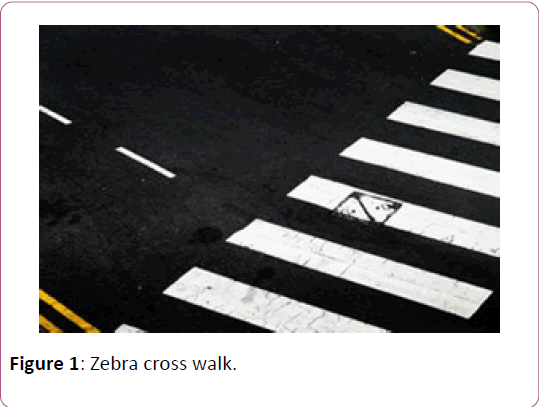
Figure 1: Zebra cross walk.
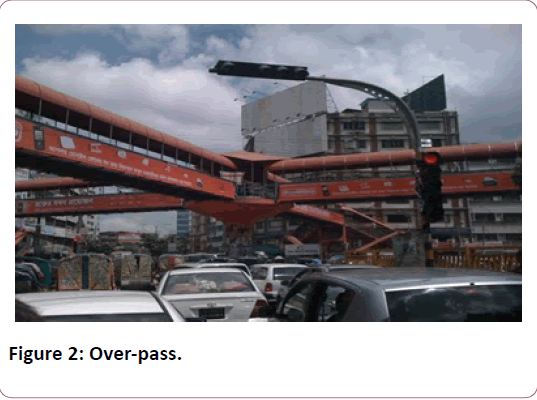
Figure 2: Over-pass.
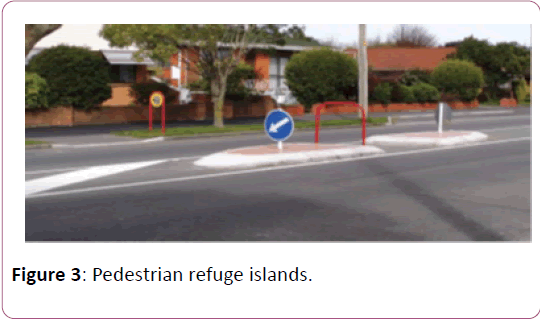
Figure 3: Pedestrian refuge islands.
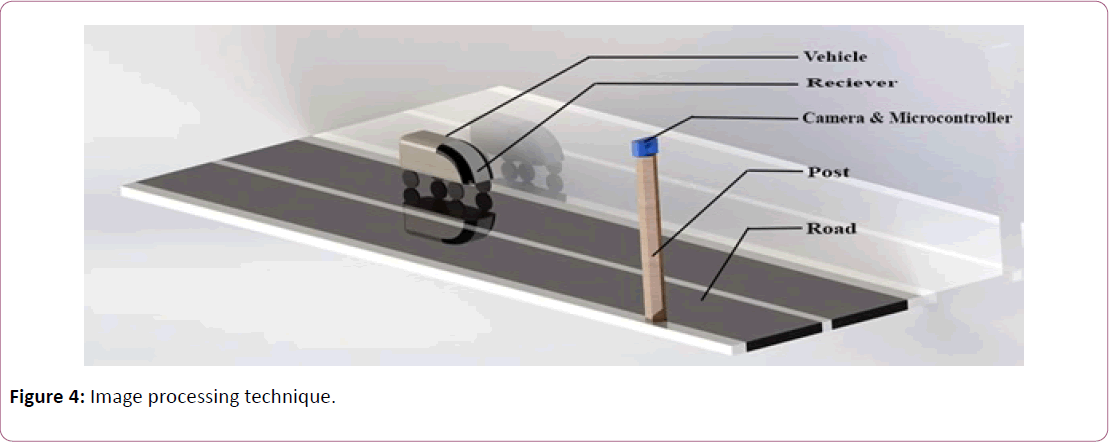
Figure 4: Image processing technique.
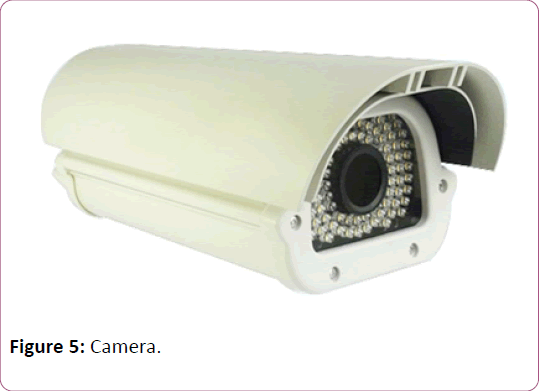
Figure 5: Camera.
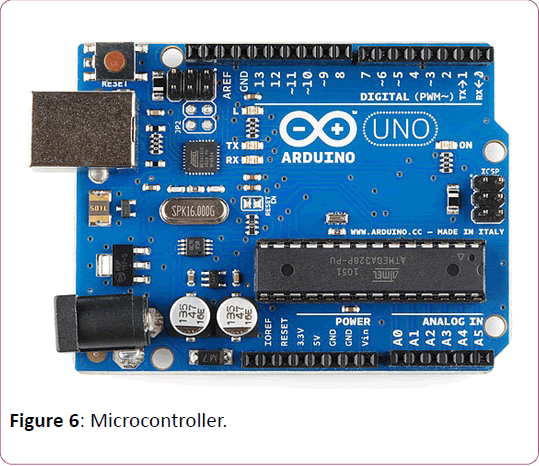
Figure 6: Microcontroller.
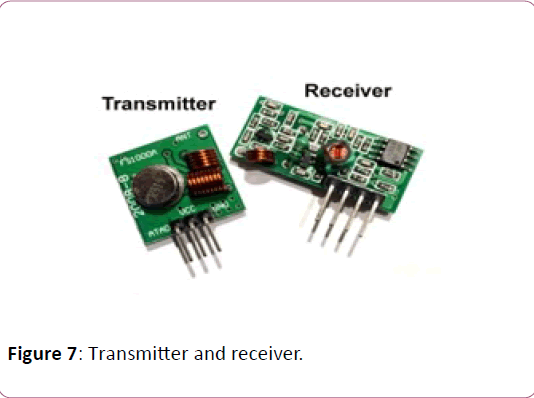
Figure 7: Transmitter and receiver.
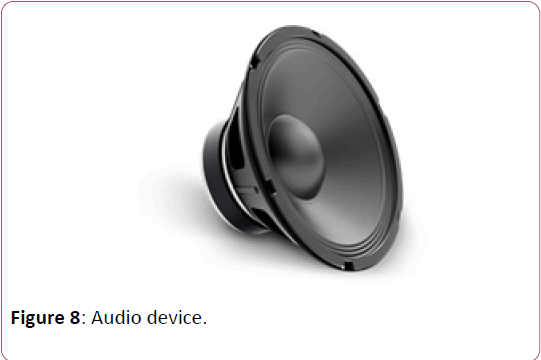
Figure 8: Audio device.
Existing systems: Most of the roads and highways of Bangladesh are actually without any kind of safety systems helpful for pedestrians. Although it is seen having a few of them in some busier and important roads. Mostly zebra crossings, over bridges, signalized pedestrian crossings etc. are being used. But the lack of willingness of using these tools is causing great safety problems for pedestrians.
ZEBRA crossing: The zebra crossing is characterized by longitudinal stripes on the road, parallel to the flow of the traffic, alternately a light color and a dark one. The similarity of these markings to those of a zebra gives the crossing’s name. The light color is usually white and the dark color may be painted in which case black is typical; or left unpainted if the road surface itself is dark. The stripes are usually 40 to 60 centimeters (16 inches to 2 feet) wide. The zebra crossings are used on pedestrian crossings controlled by traffic signals, and pedestrians have priority only when the lights show green to pedestrians.
Advantages: Zebra crossings cause less delay to pedestrians than signal controlled crossings and are therefore considered to be more pedestrian friendly.
This would reduce vehicle speeds in the concerned area.
It does not require a lot of physical structure.
Limitations: Broadly speaking, zebra crossings are considered inappropriate on high speed roads or roads with high volumes of traffic.
They can also be inappropriate where heavy flows of pedestrians such as children leaving school would cause unacceptable delays to drivers.
People are often reluctant to use as there is no strict rules and regulations; hence having these zebra cross walks become meaningless.
There is also lack of proper signal systems along with the zebra crossings which does not help to run the system effectively.
Over-bridges or Over-passes
An over-bridge allows pedestrians safe crossing over busy roads without impacting traffic. It connects two opposite sides of the road. It is a permanent structure and generally is installed in wider roads. These over-passes are found in bigger cities of Bangladesh; although the numbers are not enough in comparison to the huge pedestrians.
Advantages: There is no need of stopping of vehicles as the pedestrians would cross over through the over-bridges.
The traffic system can be smooth if proper uses of these are ensured.
Limitations: Cost is relatively very high as a significant structure is required.
Some of the overpasses are encroached by the hawkers.
The aesthetic condition of the overpasses is also not good enough.
The over-passes of the city possess serious safety hazards especially at night time. Various unsocial and criminal activities take place in the over-passes at night time.
As a pedestrian has to walk a certain distances to find an over-bridge, he/she is not encouraged to spend the time required.
Pedestrian refuge islands
A refuge island is a small section of pavement or sidewalk, completely surrounded by other road materials, where pedestrians can stop before finishing crossing a road. Refuge Island must be a minimum of 1.2 meters wide. It is typically used when a street is very wide, as the pedestrian crossing can be too long for some individuals to cross at a stretch [4-6].
Advantages: Pedestrians can cross in stages; thus minimizing risk.
Since this reduces their average waiting time, it also improves safety with impatient pedestrians less likely to use gaps that turn out to be too short for safe crossing.
Limitations: Although pedestrians cross in stages, still they have to face in coming vehicles which might be risky.
Often people do not stop in the island; rather they continue to cross without watching out for vehicles carefully.
Sometimes it is not possible to build a refuge island with enough width because otherwise it results in narrowing down the main road.
Pedestrians may have to wait much longer for a gap in vehicle traffic to cross safely, compared to zebra crossing. This will happen with heavy traffic.
Survey Work
Surveying was carried out to know the views of people on road crossing safety. It also paved a way to understand their psychology and intentions on the subject matter. A few questions were prepared for answers from people of various sections. Surveying was done among 25 people at the following places (Tables 1 and 2) [7-10]:
| Age |
Number of pedestrian fatalities |
| (years) |
Male |
Female |
Total |
| 0-5 |
56 |
33 |
89 |
| 06-Oct |
114 |
58 |
172 |
| |
80 |
15 |
95 |
| 16-20 |
63 |
15 |
78 |
| 21-25 |
76 |
22 |
98 |
| 26-30 |
116 |
14 |
130 |
| 31-35 |
81 |
21 |
102 |
| 36-40 |
110 |
15 |
125 |
| 41-45 |
73 |
21 |
94 |
| 46-50 |
60 |
28 |
88 |
| 51-55 |
50 |
14 |
64 |
| 56-60 |
70 |
28 |
98 |
| 61-65 |
50 |
14 |
64 |
| 66-70 |
40 |
8 |
48 |
| 71-75 |
14 |
9 |
23 |
| >75 |
19 |
6 |
25 |
| Unknown |
432 |
69 |
501 |
| Total |
1504 |
390 |
1894 |
| % of Total |
79% |
21% |
100% |
Table 1: Pedestrian fatalities by age and gender.
Rajshahi New Market Shaheb Bazar
Rajshahi Rail Station Area Talaimari
Kazla RUET
Questioneer
Name:
Age:
1. Do you feel unsafe when you cross the road at nonsignalized sections?
a) Yes b) No
2. Are there sufficient safer road crossing systems or tools available for pedestrians?
a) Yes b) No
3. Who do you think are most responsible for pedestrians’ death or injury while road crossing?
a) Government b) Drivers
c) Traffic Police d) Pedestrians Themselves
4. Which of the following existing system you would think best for safe road crossing?
a) Zebra Crossing b) Over-bridge
c) Pedestrian Crossing Sign d) Normally
5. Do you use a zebra cross walk or an over-bridge when you see one in front of you?
a) Sometimes b) Always c) Never
6. In your opinion why people do not want to use zebra cross walk or over-bridge if these are available?
a) Because it is time consuming b) Because of lack of law enforcement
c) Because it is not in their habit d) Because of lack of awareness
7. How can road crossing be safer for pedestrians?
a) Providing sufficient road crossing tools b) Redesigning roads
c) Limiting speed of the vehicles d) Introducing innovative tool
Answers
Table 2: Answers found from the survey work.
| Question No |
Percentage |
| |
Option (a) |
Option (b) |
Option (c) |
Option (d) |
| 1 |
77% |
23% |
- |
- |
| 2 |
19% |
81% |
- |
- |
| 3 |
26% |
33% |
4% |
37% |
| 4 |
10% |
70% |
9% |
11% |
| 5 |
35% |
47% |
18% |
- |
| 6 |
27% |
7% |
29% |
37% |
| 7 |
42% |
4% |
18% |
36% |
Table 2: Answers found from the survey work.
Opinions found from surveying
With the questions we asked people on their views on road crossing safety and the answers we found from them can be summarized as follows:
Most of the people think that road crossing is not safe at all in our country.
They think the safe traffic system does not exist in our roads.
Although a large number of people told us that the pedestrians themselves are responsible for most of the casualties, they do not follow the proper way of road crossing. It shows a mixed psychology of the people.
In their opinion increment of over-bridge can be a good solution; although we generally see people are very reluctant to use over-bridges even if these are available near them.
Also the pedestrians emphasized to grow awareness among mass people, drivers and government in broader sense to eradicate the existing situation.
They also told us the importance of introducing innovative systems for a better and safer crossing.
Solution
Image processing technique
The Image Processing Technique is an innovative method or system which is easy to install on our roads and highways and which will create a safer crossing for pedestrians. The detail of the system is given as follows:
Device set-up: In this technique a high resolution camera is used which is set up on a lamp post; the lamp post is located either inside the pedestrian island (where it is available) or at the side of the road. Also a microcontrolle, a transmitter and a power source are used and are attached to the lamp post. A receiver is kept inside the vehicles running on the road. The receiver is connected with a sound device or speaker.
Process and mechanism: The camera is connected with microcontroller, receiver and power source. Microcontroller is also connected with the transmitter. In this process camera takes the pictures of pedestrians continuously who are inside the specified area of the road. Then the inputs are transferred to microcontroller for image processing and data analysis. The processed data is then transferred to transmitter which spreads the signals as radio frequency. The receiver kept inside the vehicles inside the specified region receives the signals and the speaker attached to the receiver generates a sound by which the drivers can know the presence of the pedestrians. Thus the safety of the crossing pedestrians is ensured.
Devices descriptions: The devices used in this technique are described as follows:
Camera: The high resolution camera detects every pedestrian inside the zone and captures the pictures.
The camera is pre-programmed to avoid detecting the pedestrians who are on the corner side of the road. Also to detect person only, the size and shape of a person is specified in the program so that camera does not take pictures of anything but crossing pedestrians.
Microcontroller: Microcontroller is an integrated circuit which is designed to connect to machine. It can control machines, gadgets etc. Arduino type microcontroller is used; depending on the programs different types of arduino are available. Arduino module can be found both for transmitter and receiver. The whole program used in this technique is kept in the main chip of the microcontroller which scans the road all the time. A dc source is used for power in microcontroller. Also a power supply device is used which supplies required power to other components.
Transmitter: Transmitter is an electronic device which can produce radio wave. In the Image Processing Technique an amplifier can be attached to the transmitter to generate any types of frequency.
Receiver: A receiver is kept inside the running vehicles. It is used to receive the radiofrequency from the transmitter. The frequency used in this system is remained fixed.
Audio device: It receives the frequency and generates a sound.
Surveying on “Image Processing Technique”: The following questions were asked to know the opinion of the people on our new system for pedestrians’ safety (Table 3):
| |
|
Percentage |
|
|
| Question No |
Option (a) |
Option (b) |
Option (c) |
Option (d) |
| 8 |
70% |
30% |
|
|
| 9 |
11% |
4% |
23% |
62% |
| 11 |
44% |
52% |
4% |
- |
| 12 |
6% |
58% |
0% |
36% |
| 13 |
5% |
27% |
68% |
- |
| 14 |
72% |
28% |
- |
- |
Table 3 :Answers
1. Do you think “Image Processing Technique” can be introduced in our country?
a) Yes b) No
2. In which way this method is better than the existing systems?
a) Zebra cross walk is not required in this system
b) Drivers clearly can know the presence of any pedestrian in roadway
c) It is not time consuming
d) Above all
3. Assign a numerical score on a scale of 1 (Poor) to 5 (Excellent) to this method
Answer:
4. In your view, for government installing the devices is – a) Costly b) Affordable c) Very much affordable
5. What will be the main problem using “Image Processing Technique”?
a) Installation of devices b) Maintenance of devices
c) Efficiency of the system d) Above all
6. Will the vehicle owners keep a receiver and a sound device inside vehicles when it will be mandatory?
a) Very likely b) Likely c) Unlikely
7. Do you think any modification is required in the method?
a) Yes b) No
8. Will you comment regarding safety of pedestrians while road crossing and our innovative method?
a) Comments and Suggestions:
Answers
From the answers found from the surveying we can say that- “Image Processing Technique” is applicable in our country if appropriate care is taken; although some people said that it could not be installed taking into considerations the lack of systematic approach among us.
Majority of people thought that maintenance of the devices might be a problem.
High cost may also be a factor in applying the method.
Advantages of the system: This system works in the way that presence of pedestrians on the road is identified by the driver of the vehicle; so safety of pedestrians is ensured from the side of drivers, hence there is very little to do for pedestrians.
The system works best on highways at night of areas where very few people cross the road, sometimes drivers cannot see any pedestrian because of the darkness at those areas; but the sound device used in this system will inform the drivers about presence of any pedestrian and thus the safety is ensured.
As we know people are very reluctant to use zebra crossings or over-bridges there is no need to use these in this method.
Disadvantages of the system: If the drivers do not care about pedestrians who are already on the road, the system will not work at all.
The maintenance of the devices can be a tough task.
Vehicle owners may not install the receiver and sound device inside their vehicles; if that happens the system fails.
Some other recommendations
Only “Image Processing Technique” alone cannot solve the whole problem. The government, people, drivers, car owners will have to work hand in hand to minimize the level of injuries occurring while road crossing. We are giving some recommendations to follow for a safer life on the road: Pedestrian islands should be provided to the roads of greater width where pedestrians can stop in the midway before finishing the crossing.
Laws must be implemented for both the pedestrians and the drivers; whoever will break the laws proper actions have to be taken by the law enforcement authority.
Speed limits of cars need to be maintained specially in the rural section of highways.
Government should try to increase awareness among people by using media or social networks.
More over-bridges need to be built on busy roads; also proper use of these over-bridges has to be ensured.
In school levels students should be taught the proper way to cross the road safely and also some basic rules while they are on the road [11,12].
Conclusion
With the ever increasing vehicles and roads the risks of pedestrians will also be increased. But if we take proper actions and act accordingly this risk rate can be minimized. Pedestrians road crossing safety can only be tackled effectively if the state takes a leading role and responsibility with due commitment by activating lead the agencies in the relevant sectors with close collaboration and understanding.
We tried our best to fulfill the objectives that we set before the case study. Although we may not be fully successful, we will be delighted if our work will come to any help on ensuring pedestrians safety.
References
- BRTA Annual Report 2014.
- Fundamentals of Digital Image Processing by Anil K. Jain.
- Microcontroller and Embedded Systems by Muhammad Ali Mazidi.
- A Review of Road Accident Research by G.M. Mackey.
- Cause and Preventions of road Accident by John Cohen.
- Xia C, Han J, Qi F, Shi G (2019) Predicting Human Saccadic Scanpaths Based on Iterative Representation Learning. IEEE Trans Image Process.
- Ye S, Wang L, Cheong KH, Xie N (2017) Pedestrian Group-Crossing Behavior Modeling and Simulation Based on Multidimensional Dirty Faces Game. Complexity Pp: 1-12.
- Helbing D (2016) A mathematical model for the behavior of pedestrians. Behav Sci 36: 98-310.
- Butler AA, Lord SR, Fitzpatrick RC. Perceptions of speed and risk: experimental studies of road crossing by older people. PLoS one 11: e0152617.
- Di Stasi LL, Megías A, Cándido A, Maldonado A, Catena A (2014) The influence of traffic signal solutions on self-reported road-crossing behavior. Span J Psychol 17.
- Jain A, Gupta A, Rastogi R (2014) Pedestrian crossing behaviour analysis at intersections. Int J Traff Trans Eng 4: 103-116.
- Hine J, Russell J (1993) Traffic barriers and pedestrian crossing behaviour. J Transp Geogr 1: 230-239.









